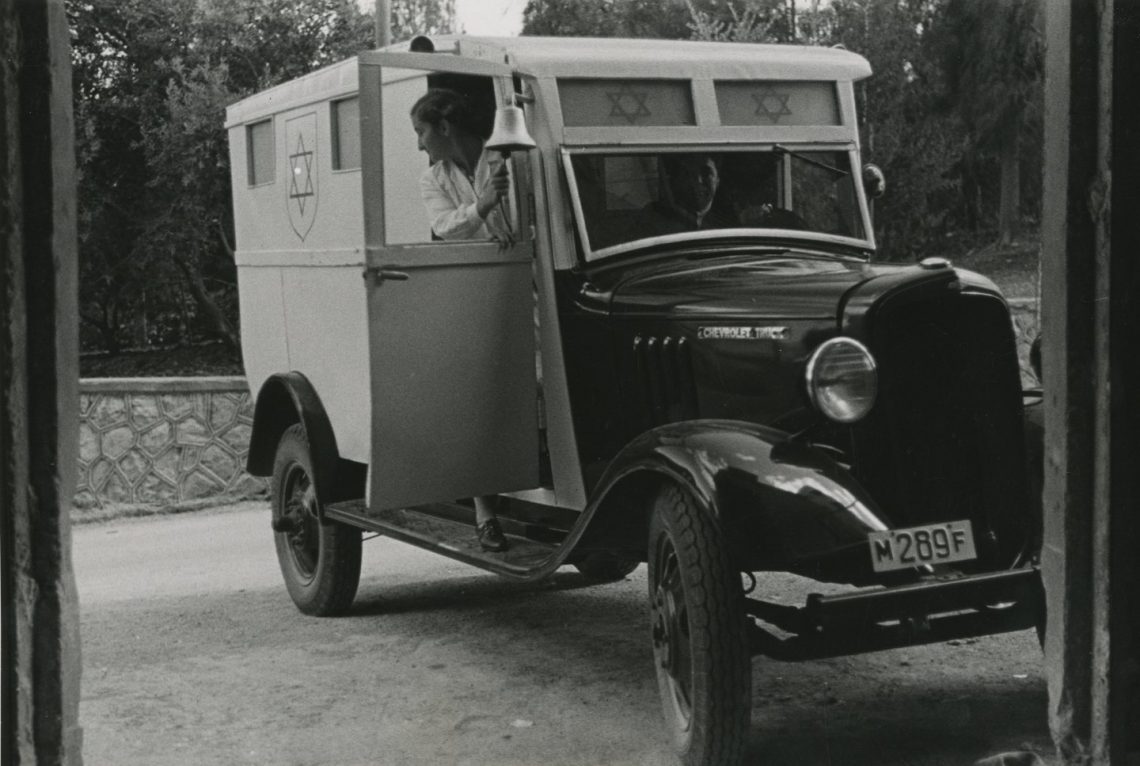In April 1959, the chamber of the Arab League Boycott of Israel submitted a demand that the Swiss watch company Ardath remove the Star of David from their logo, as it was an ancient Jewish emblem. A short while after, the Maariv newspaper delegate, Yosef “Tommy” Lapid Z”L, published an item about the British tea brand Brooke Bond, who also surrendered to the Arab League and removed the Star of David which decorated their tea packs. Brooke Bond’s attempts to explain that this sign was in use on the tea packs long before the founding of the State of Israel were in vain. The Arab’s sensitivity to these two combined triangles was so high – as well as their fondness of imported tea was so strong – they won this battle.
The Arab League representatives were not the only ones though. It has been tried before to hide what became the most distinct Jewish symbol. In 1950 the Red Cross was willing to accept the “Red Magen David” organization as member of the international Red Cross on one condition – if the Star of David is removed, explaining that the Red Cross is an international body without any religious orientation, while the Star is an old religious Jewish emblem. They did not demand the same from the Muslim organization, the Red Crescent with its traditional symbol. Perhaps it was due to the old hostility of both Christianity and Islam towards their historical mother religion – Judaism.
Among themselves, Jews too often resented the Star of David, and almost rejected it altogether.

In 1948, after the Declaration of Independence, a public debate on the design of the national flag has risen. The Zionist movement feared that should the state’s flag and the movement’s flag were identical, members of the movement in the diaspora will object, as well as anti-Zionist Jews abroad. The newly founded government published an appeal for designing a new flag to the new state. 164 artists and designers submitted some 400 drafts to a special committee. One of them was by Otte Wallish, a Czech graphic designer, “the Zionist Mad Man”, which included two blue stripes and seven golden stars symbolizing seven working hours a day – Herzl’s visionary of a working day in the Jewish state.
Wallish’s flag almost won the contest, when a controversy broke out. People said the Star of David was a religious and national symbol. Didn’t Simon bar Kokhba lead his warriors wearing a Star of David? Didn’t’ Ha’ARI use it as a mystic icon? And didn’t King David fight his enemies while carrying a shield decorated with the Star? The pressure helped and on October 18, 1948 the state’s council chose the familiar Zionist flag with the Star of David in the center as the official flag of the State of Israel. After all, heroic myths are much more suitable for the establishment of a new brave state than some Socialistic welfare fantasies of Viennese journalists, aren’t they?

While this was going on, Gershom Scholem, the famous Kabbalah researcher, was sitting in his study at the Hebrew University, laughing his heart out. Naturally he was aware of the importance of national emblems carrying deep historical and religious cultural baggage, but he also knew all too well that the Star of David was a late component in Jewish history and had absolutely nothing to do with neither King David nor Shimon bar Kochva. When he finished laughing, he sat down to write his furious exemplary essay “Magen David – History of a Symbol”.
Gershom Scholem refuted all myths regarding the ancient roots of the symbol in Jewish tradition. This came as a surprise for both the Jews as well as for the Red Cross and the Arab League guys we mentioned earlier. Scholem showed that this old shape was popular among ancient nations as a magic sign against demons. Indeed it is found in Jewish archaeological findings, usually as a decorative element, but so is the swastika. Until the middle ages there are no records of Stars of David on tombstones, synagogues or ritual objects. It was however used in Christian churches and cathedrals. On which he comments: “magic signs pass from one nation or group to another, wander back and forth and often change in the process”.

The rise of the Star of David as a Jewish symbol started after the Practical Kabbalah (Jewish magic and witchcraft) started to spread. Another known sign with magic meaning was the Solomon’s Seal/Solomon’s Ring, on which the divine name and a hexagram were carved. It was considered very efficient in scaring off evil beings and reached Judaism from the Arabs.
It was in 14th century Prague that the use of Stars of David among Jews was really taking off. According to one story, the city’s ruler enabled the Jews to choose their own flag and they chose the Star. Then during the 17th and the 18th centuries the shape spread throughout Moravia and Bohemia. We do not know whether the Jews chose the symbol or the Christians imposed it on the Jews, but soon they became attached to it and by the 19th century it was already highly popular.

It was the Zionist movement who crowned the Star of David as the national symbol after searching for an icon that on one hand would be popular but on the other hand not too religious. Then, in intentional vicious irony, the Nazis turned it into a sign of humiliation and death on the clothes of each Jew.
In his typical poetic style, Gershom Scholem adds up in a Hassidic insight: the Star of David became sacred during the Holocaust; therefore it is worth lighting our new way of live and growth. Only From the lowest point can you reach the high peaks. Words of truth indeed.